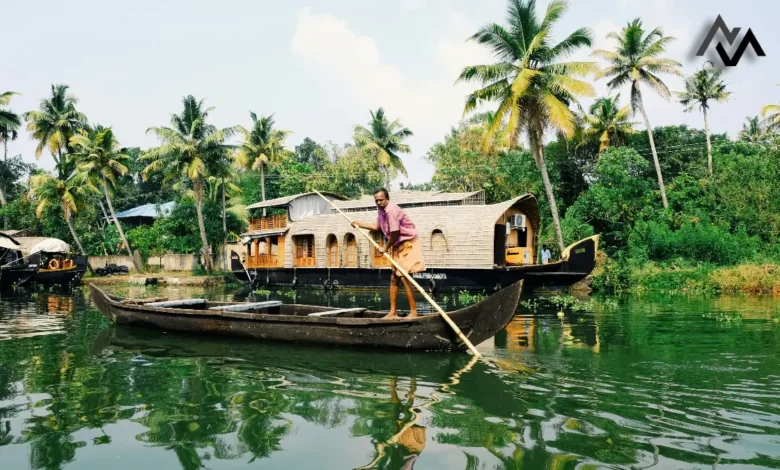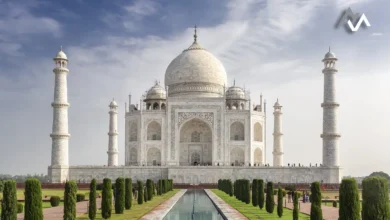Unlocking India’s Tourism Potential: What Holds Back Foreign Visitors Compared to Southeast Asia?

India is a land of vibrant cultures, stunning landscapes, and a rich historical tapestry. Despite this, the country struggles to match the influx of international tourists visiting its Southeast Asian neighbors like Thailand, Malaysia, and Vietnam. While India holds immense potential to become a top global destination, several factors prevent it from reaching its peak.
Here’s a closer look at the opportunities, challenges, and strategies to elevate India’s tourism industry to global standards.
Why India’s Tourism Potential Remains Untapped
India is home to iconic landmarks such as the Taj Mahal, majestic Himalayan ranges, and serene backwaters of Kerala. The diversity in geography, food, and festivals makes it a dream destination for any traveler. However, in 2023, India attracted just 6.2 million foreign tourists, compared to 11.5 million in Vietnam, 18 million in Thailand, and 26 million in Malaysia.
This gap raises a fundamental question: Why are travelers choosing these nations over India?
Key Factors Behind India’s Tourism Challenges
1. Infrastructure Gaps
One of the primary issues is inadequate tourism infrastructure. While cities like Jaipur, Delhi, and Goa have decent facilities, many areas lack efficient transportation, modern amenities, or well-maintained roads. For instance, neighboring Thailand boasts world-class beaches, seamless intercity connectivity, and an extensive hospitality sector.
2. Safety and Hygiene Concerns
Safety, especially for solo female travelers, remains a major concern in India. Reports of harassment and crimes deter international tourists. Furthermore, hygiene standards in public spaces often fall short of international expectations, particularly when compared to the pristine streets and facilities of countries like Singapore or Malaysia.
3. Bureaucratic Hurdles
India’s visa process, although simplified in recent years, still poses challenges. Lengthy procedures and restrictions can discourage last-minute or casual travelers. In contrast, countries like Thailand offer easy visa-on-arrival systems, making them more tourist-friendly.
4. Lack of Marketing and Promotion
Southeast Asian nations aggressively market their tourism destinations globally through ad campaigns, travel partnerships, and social media influencers. India, despite its extraordinary offerings, lacks a cohesive global tourism strategy that resonates with younger and tech-savvy travelers.
5. Cleanliness and Sustainability
While India’s efforts toward cleanliness have improved with initiatives like Swachh Bharat, challenges persist in maintaining clean public spaces and reducing pollution. Comparatively, nations like Vietnam and Malaysia are gaining popularity for promoting eco-tourism and sustainable travel.
The Southeast Asian Advantage
Countries like Thailand and Malaysia cater specifically to international tourists by combining affordability with luxury. They offer all-inclusive packages, have excellent air connectivity, and promote diverse experiences—whether it’s beaches, bustling cities, or serene retreats.
Moreover, their governments actively focus on tourism as a key economic driver. For example, Thailand dedicates a significant portion of its GDP to tourism infrastructure and marketing, reaping rewards in the form of a robust tourism economy.
What India Can Do to Compete Globally
To bridge the gap and capitalize on its unmatched cultural and natural wealth, India needs a multi-faceted approach:
1. Streamline Visa Processes
Expanding visa-on-arrival facilities and reducing processing times can make India a more accessible destination. Leveraging technology to offer seamless e-visa options is critical.
2. Invest in Infrastructure
Upgrading airports, expanding rail networks, and improving road conditions are essential. Tourist hubs should have accessible facilities, clean restrooms, and reliable public transport.
3. Prioritize Safety
Addressing safety concerns, particularly for women, should be a national priority. Launching tourist-specific safety initiatives, increasing police patrols in popular destinations, and establishing traveler helplines could foster confidence among visitors.
4. Develop Niche Experiences
India must tap into niche tourism sectors such as wellness tourism, adventure tourism, and eco-tourism. Promoting Ayurveda retreats, trekking in the Himalayas, and cultural festivals could attract more diverse audiences.
5. Aggressive Marketing
India needs to build an engaging and consistent global campaign. Leveraging digital platforms, collaborating with global travel influencers, and hosting international tourism events can elevate its global image.
The Road Ahead
India has all the ingredients to become a global tourism powerhouse. With proactive measures to enhance infrastructure, safety, and marketing, the country can unlock its true potential. The time is ripe for India to not just dream of being a preferred destination but to act decisively to make it happen.




